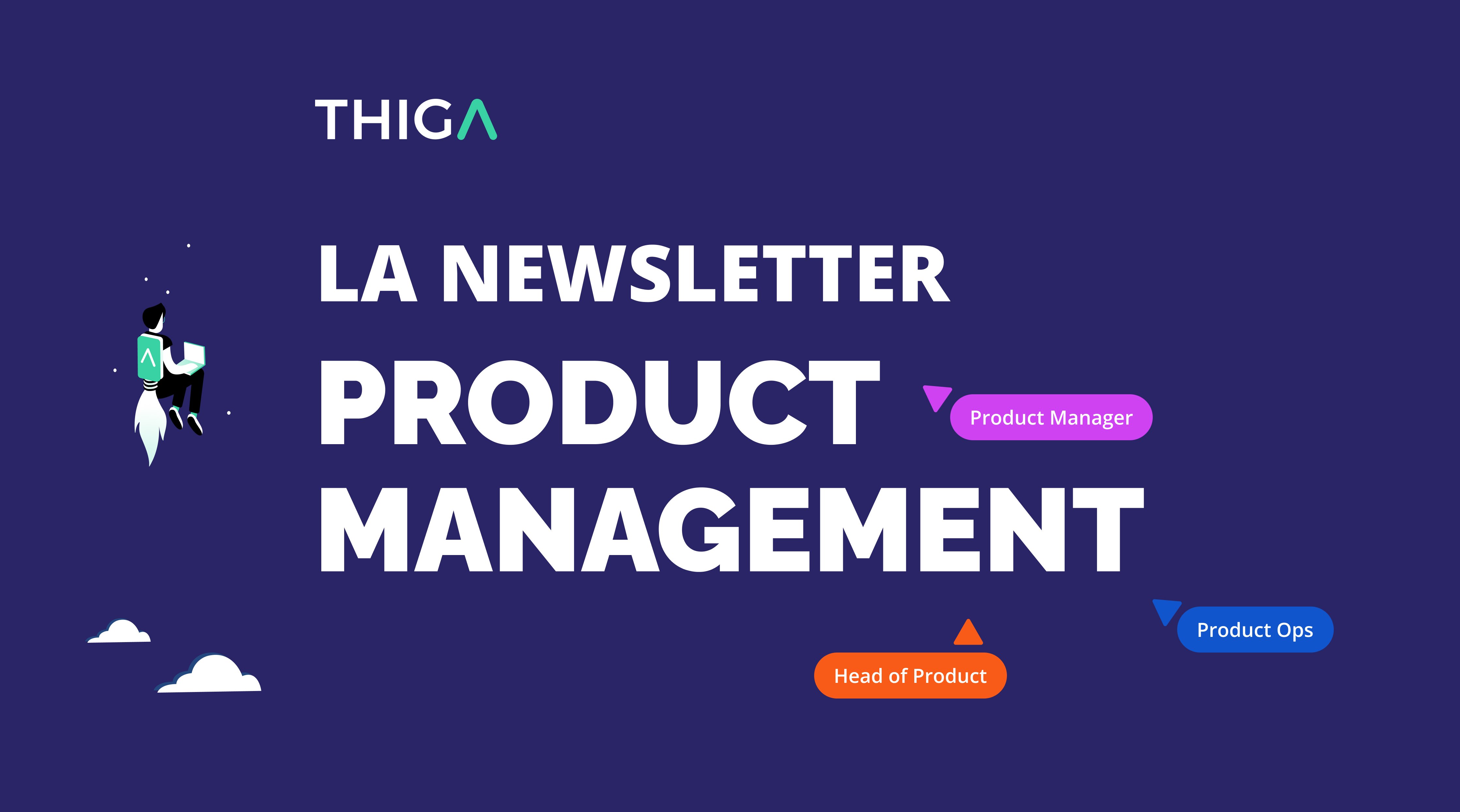You don’t design a Medtech product—healthcare technology—the same way you would a traditional product. We’re not talking about optimizing the customer journey of an e-commerce site here! Digital products in Medtech are meant to help healthcare professionals treat, and sometimes even save, their patients. As such, the slightest error can have serious consequences. Martin Haver, Senior Product Manager at Thiga, shares in this article his experience in Medtech and offers his advice for excelling in this unique field.
Being a Product Manager in Medtech is a job like no other. Building a product that has a direct impact on patients’ lives is an enormous responsibility! A poorly thought-out feature doesn’t just risk lowering the retention rate—it could compromise a diagnosis or hinder a doctor’s work. But at the same time, our products have real impact. Monitoring apps, surgical robots, medical imaging, 3D-printed organs... The possibilities are endless! I quickly realized that this field was going to be a passion for me.
My career led me to two players in the Medtech space: a startup developing cancer diagnostic tools based on artificial intelligence, and a company where I worked on a SaaS tool for remote monitoring of transplant patients. In this article, I share my experience as a PM in Medtech—between strict regulations, interoperability challenges, and evangelization in the face of skeptical users. And most importantly, one lesson I’ve learned: when it comes to health, innovation isn’t just about technology.
Tired of investing in artificial intelligence blindly? Download our free AI Product Canvas, which brings together all the key questions to ask before starting an AI project.
Navigating an ultra-regulated environment
The first shock when entering the Medtech world is the regulation. You expect the sector to be controlled, but believe me—you don’t realize to what extent until you’re in it. I discovered that to certify a medical software product, you have to follow extremely rigorous processes, defined by ISO standards (international standards set to ensure quality, safety, and effectiveness). For example, while working on a certified medical device, even to validate a simple change in the user interface, we had to assess and document its impact on the product’s compliance.
All these checks take an enormous amount of time. I remember one occasion where, to validate a product’s ISO compliance, a five-person team had to manually execute a test plan for an entire month. Imagine dedicating one or two whole sprints just to regulatory testing! This complexity has a huge impact on the Product roadmap. You can’t iterate like in a standard startup. Every update has to be justified, tested, and approved according to specific standards. If a product is already certified and you want to make a major change, you often have to restart part of the certification process. All this demands ultra-strategic planning and ruthless execution discipline.
QARA: the essential safeguard
A good Medtech PM quickly learns that the Quality and Regulatory Affairs team (QARA) isn’t just there to be a nuisance. I admit, at first, I tended to see QARA as an obstacle to development, always requiring more documentation and testing. But once I understood their role in protecting patients, my perspective changed.
Yes, the QARA team slows us down… but for good reason! They push us to rethink decisions we might not have fully considered. They also serve as a safeguard during audits and inspections. Thanks to them, I avoided several mistakes that could have cost us months of delay. And most importantly, the QARA team helps us understand what is and isn’t feasible when working on a certified medical device. In short, they are the compass without which we’d be sailing blind through this ocean of regulations.
Interoperability: more of a political challenge than a technical one
In other industries, plugging in an API and getting systems to communicate seems like a technical formality. In Medtech, interoperability goes far beyond mere feasibility. For example, when we wanted to connect a software tool to a hospital via their Hospital Information System (HIS), we found that the difficulty wasn’t technical compatibility. The real challenge was convincing the hospital to agree to the integration… And the decision wasn’t even entirely theirs. The HIS provider also had a say! And they rarely welcome external initiatives.
Some people even said: “If it’s obvious, I don’t need AI. And if it’s not, it can’t be trusted”
All of this required real diplomacy. We had to identify influential allies within the hospital—doctors, IT directors—who could advocate for us internally. Without their support, no integration would have been possible, no matter how good our technical solution was.
Understanding users: between skepticism and pragmatism
In Medtech, as with many digital products, users are numerous: doctors, nurses, patients, hospital decision-makers… Each with their own needs and constraints. But one thing stands out: resistance to change.
Take doctors, for instance. They’re generally skeptical of AI-based tools. At one client, we had a very effective algorithm for predicting the survival of a transplanted organ. But some doctors almost systematically ignored it because it didn’t provide explanations for its results. To them, a tool that gave a prediction without justification was either useless or dangerous. Some even said: “If it’s obvious, I don’t need AI. And if it’s not, it can’t be trusted”. Additionally, healthcare providers are obsessed with ergonomics and efficiency. I’ve seen doctors count the number of clicks it takes to complete a task, proving that current software tools were wasting their time. If a tool clearly saves them 30 seconds per task, they adopt it. If not, it gets shelved.
In other words, to convince these reluctant but pragmatic users, you need to talk to them not just in terms of features, but in terms of direct impact on their work—and, most importantly, explain what’s happening behind the AI algorithms. As you’ve probably gathered, Medtech is a unique field—both exciting and full of constraints. My only advice to a PM just starting out in this sector: don’t rush. Fast execution and constant iteration may be pillars of Product Management, but you can’t apply them by the book in this context.
Because a poorly designed product can sometimes do more harm than a product that never ships. In healthcare, a single mistake can destroy user trust for good. If professionals stop using your solution, they won’t come back. Better to move slowly but surely, always delivering flawless quality. I’ll say it again: when it comes to health, innovation isn’t just about technology. It’s about reinventing how we work, with more discipline, and keeping our eyes firmly on what’s happening in the real world. Maybe even both.
Want to level up your Product skills? Check out our Agile Product Management Book, to build the right product and to build it right.



-1.png)
